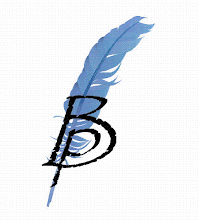A Journey With the Knowing of Devotional Musical Instruments
Prevalent Indian Drums-Structure and composition
Leather instruments are mainly called as ‘Anabadha’ or ‘Abadha’ playing instruments.
In India there are several types of instruments.The significant names among them are Pakhawaj,Tabla,Khol,Dhol,Nakkara,Mridangam,Dvil,Sudha Maddalam,Chenda,Urumi,Pambai,Udukku,Tumbakanari,Huduk,Tilima etc.
The descriptions are as follows:-(Leaving out Tabla and Pakhawaj)
Khol:-
The other name of ‘Khol’ is ‘Mridangam’ but it should be confused with the ‘North Indian ancient Mridangam’ or ‘Pakhwaj’.The whole body of ‘Khol’ is made with burnt clay. The middle portion is higher and has two slanting faces on either side.The two face are made of leather and the middle of each face has a black portion called ‘Gab’.The right face(maxm. size-2/3 inches) is smaller as compared to the left face. The specialty of ‘Khol’ is there is no need of adjusting ‘sur’ or scale as in the case of tabla. ‘Khol’ is usually used with ‘Kirtans’, Devotional songs and ‘Kirtananga Rabindra Sangeet’ .It is also used with Manipuri dances.
Dhol:-
The body of a Dhol is made of wood and the faces are of leather. Normally a ‘Dhol’ is 18’’ to 20’’ inches in length and 12’’ in breadth. The two sides are fitted with strong ‘Rojju’ which are given through small round rings. The rings are used to adjust the scale of the instrument. They are played with free hands or sometimes with the help of sticks. They are mostly used to accompany folk songs.
Nakkara: -
‘Nakkara’ is one the most significant ancient musical instruments. ‘Bheri’ or ‘Dundubi’ can be considered just as different types of ‘Nakkara’. Usually ‘Nakkara’ is made of Bronze or Brass and its shape is much like the ‘Bayan’ of a tabla. The face is made of leather and is tightly fitted by ‘Rojju’. Its height is approximately 2’1/2 feet to 3 feet. ‘Nakkara’ is played with the help of sticks but with the ‘Sanai’ of North India ‘Nakkara’ is played with hand only.
Mridangam:-
The North Indian ‘Pakhawaj’ is called as ‘Mridangam’ but it has certain dissimilarities with the ‘Mridangam’ of South India. The size of a ‘Mridangam’ is less than that of a ‘pakhawaj’ and whereas the left face of a ‘Pakhawaj’ is played with open palm ,in case of ‘Mridangam’ it is played with fingers like that of a ‘Bayan’ of a Tabla. The length of a ‘Mridangam’ is approximately 1’1/2 to 2 feet. It is usually played with heavy classical music and songs of North India.
Tabhil: -
The shape of a ‘Tabhil’ is much like that of a ‘Dhol’ Its right face is played with fingers while left face with strong wooden stick. This instrument is used with classical musical instruments of North India.
Suddha Maddalam:-
It’s a North India musical instrument and resembles much like that of a ‘Mridangam’ but much bigger in size than ‘Mridangam’ and its ‘gab’ is also much thicker and larger.It has a much heavier sound wave than ‘Mridangam’. This instrument is indispensable for the Kathakali dance of Kerela.
Chenda: -
‘Chenda’ is a type of ‘Dhol’ with length 2 feet and breadth 1 foot. It is played with the help of two sticks in two hands. It is also used with Kathakali dance of Kerela. It is also used with the folk dances of Northern and southern India.
Urum:-
It is also like ‘dhol’ in structure and the two faces are made of leather.It is played with the help of a 1’1/2 inches long curved stick.
Pambai:-
It has been made by uniting two 1 foot long ‘Dhols’ together. The upper part is made of brass and the lower part is made of wood and both faces are of leather. It is played with hand and stick. It is usually used with folk dances of the Northern India.
Udukku:-
It is about one foot long with a thin middle part and shaped like that of a ‘Dugdugi’. It is either made of wood or mud. It is held in left hand and played with right hand. It has limited use in some folk songs of Tamil Nadu.
Tumbakanari:-
It is the Kashmiri ‘Dholak’. It is shaped like a water pot. The lower part is made of leather. It is help below the left arm and played with the right hand. It is a very popular instrument of Kashmir.
Hudukku:-
It is like a ‘Dumru’ but much larger in size. Its both faces are made of leather and are held together by strong rope. It is suspended with a rope from the left shoulder and played with the right hand. It is popular in the ‘Gharwal’ AREAS.
Timila:-
It is also a type of dholak. It is suspended with a rope from the left shoulder and the upper part is played with both hands. It is used in devotional songs of temples of Kerela.
by Sonnet Mondal.
Wednesday, 23 December 2009
Subscribe to:
Post Comments (Atom)






No comments:
Post a Comment